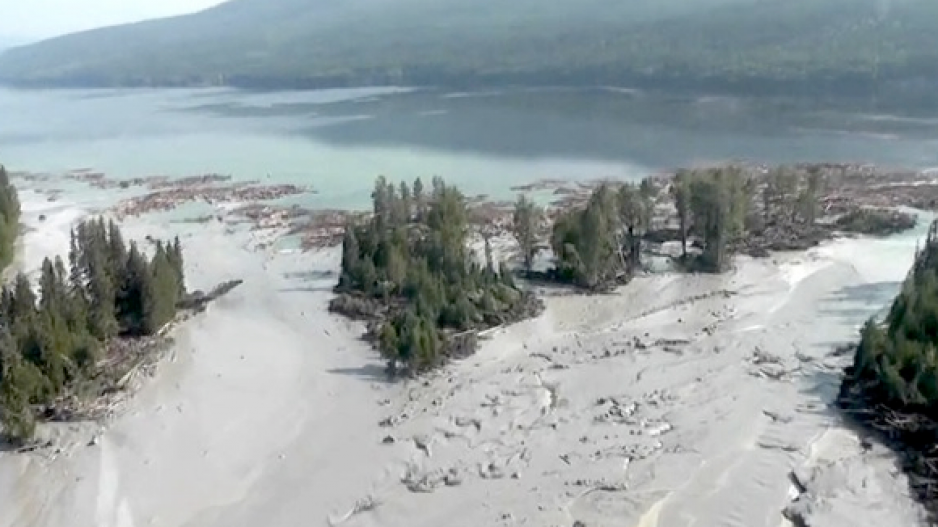When it comes to responding to accidents like the train derailment that happened yesterday near Pemberton, there is a tendency within government to respond with tougher and potentially overly prescriptive regulations.
But the Ecofiscal Commission is suggesting an alternative with a model that is similar to putting a price on carbon: putting a price on risk.
There are still a lot of unfunded liabilities in Canada, especially in mining, according to the commission.
These unfunded liabilities not only mean that taxpayers could end up paying for disasters, like tailings pond breaches, it also means companies may not put as much effort into risk mitigation and minimization if they know they won’t be held liable. And that may actually increase the risk of disasters.
“Leaving risks unpriced can exacerbate them,” says the commission’s new report, Responsible Risk.
“When firms know they may bear less than the full cost of environmental damage arising from their actions, they have less incentive to take actions that reduce the risk of harm. As a result, overall risk to the environment can increase.”
The report just happened to come out July 12 – the same day that a Canadian National Railway train derailed near Pemberton, dumping several railway cars into Gates Lake.
Fortunately, the boxcars contained wood products, not oil or chemicals, unlike 2005, when another CN Rail derailment dumped caustic soda into the Cheakamus River, killing an estimated 500,000 fish.
Also, fortunately, for the taxpayer, railway companies are now covered for such rail disasters through an industry wide assurance pool. Others, like mining, aren’t.
The commission cites recent examples of serious industrial accidents – the 2014 Mount Polley tailings pond collapse, the horrific and deadly Lac-Megantic rail disaster in 2013 that killed 47 people in Quebec, and a 2016 oil spill into the North Saskatchewan River.
After the Lac-Megantic disaster, the federal government passed the Safe and Accountable Rail Act, which created an industry fund, which all rail companies pay into, to cover the cost of future rail disasters. Pipelines have a similar fund in Canada, Beguin said.
The mining industry doesn’t, however, and in B.C., there are still some significant unfunded liabilities.
B.C. mining companies are required to put up financial assurances for mine reclamation for when a mine closes. But that doesn’t guard against unexpected disasters, or bankruptcies that could still leave taxpayers on the hook for environmental clean-ups.
In the Mount Polley case, the cleanup cost was $67 million. Fortunately, the company, Imperial Metals (TSX:III), was still solvent and able to pay the costs.
That’s not always the case, however, so despite the fact B.C. has a polluter pay policy, it can’t draw blood from a stone.
A case in point was the Tel gold mine on Banks Island. The company that owned it went bankrupt after the government shut it down for multiple permit violations in 2015. Taxpayers are potentially on the hook for any cleanup costs that exceeded the reclamation security deposit it was required to make.
According to a 2016 BC Auditor General’s report, there is up to $1 billion in unfunded liabilities for mine remediation and reclamation.
The Ecofiscal Commission calls this a “liability gap” that governments should address the way it has for other sectors like railways.
Financial assurances can take a variety of forms, Beguin said.
“It could be bonds, it could be asking for assets up front, or it could be mandating insurance, or it could be industry funds. So you could be asking industry to collectively insure each other, essentially. And that means if one of them goes under, then everybody else fills the gap.”
Beguin said pricing risk is a way of addressing environmental concerns without bogging industries down with overly prescriptive regulations.
“Let’s not be prescriptive to exactly how and why they manage risk,” Beguin said. “It’s giving them flexibility to innovate new and better ways to reduce risk at lower costs.
“We’re not saying that there’s not a role for regulations or safety standards or all those things that we have. We’re just saying that these extra things, these financial assurance policies, can fill gaps in those exiting rules and liability laws.”
Addressing risk with financial assurances, rather than regulations, could give companies the flexibility and incentive to properly mitigate risk, in much the same way carbon pricing incentivizes companies to reduce their carbon footprint.
“At the end of the day, it’s not about ignoring risks, or about eliminating risk.,” Beguin said. “It’s about managing risk and a good way to do that is putting a price on it and financial assurance can do that.”
Bill Bennett, former Energy and Mines minister, said he thinks the Ecofiscal Commission "are on to something with their discussion about pricing risk," and admits that B.C. has not done a good job of making sure sufficient bonding was in place to cover the full cost of mine reclamation and remediation.
However, he warns that the mining and exploration sectors need to be treated differently. He doesn't think exploration companies could bear the cost of fully funding their liabilities the way mature mining companies might.
“If any government places a new, significant financial obligation on the B.C. exploration industry, it will leave B.C.,” he said in an email to Business in Vancouver. “I have no doubt.
"And if the exploration industry dries up, as it did during the 1990's, there are no discoveries or early development that eventually in rare cases, lead to new mines.”
Nor does he think the mining industry in B.C. is big enough for the kind of industry pooling that is done for railways and pipeline companies.
“Insurance from large international insurers is the answer in my view,” Bennett said.
“For exploration companies… if a ‘pool’ is suggested, the response will be, ‘we can hardly raise money to do the necessary drilling and environmental studies and (First Nation) consultation - there's no way lenders or shareholders will lend for some sort of government fund.' And they are right.”




